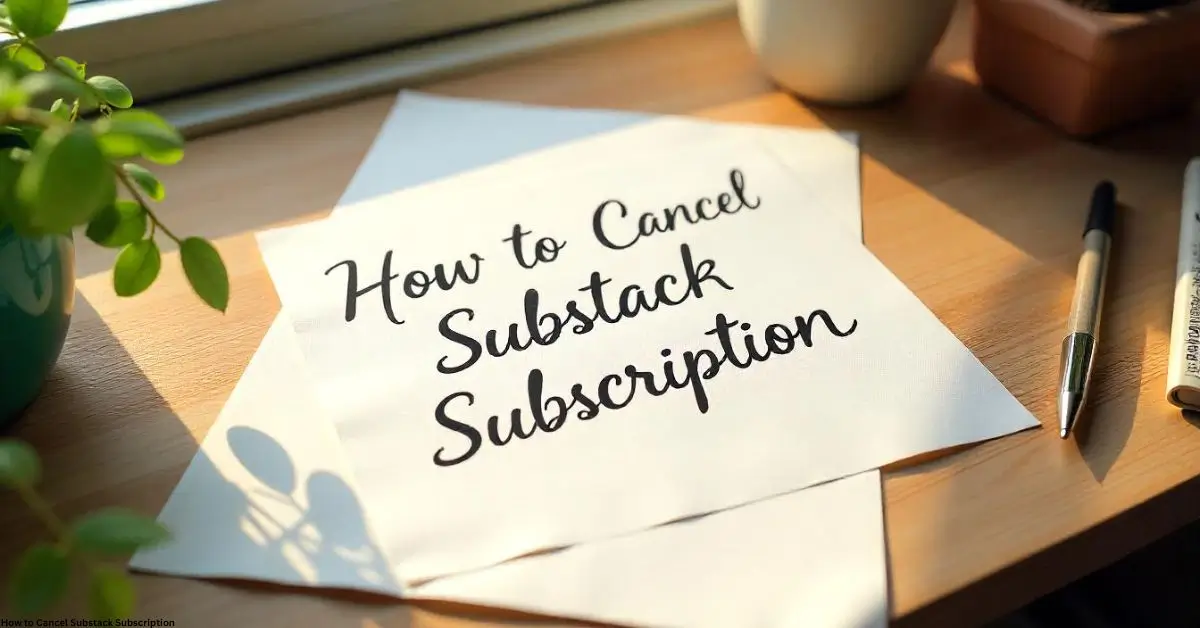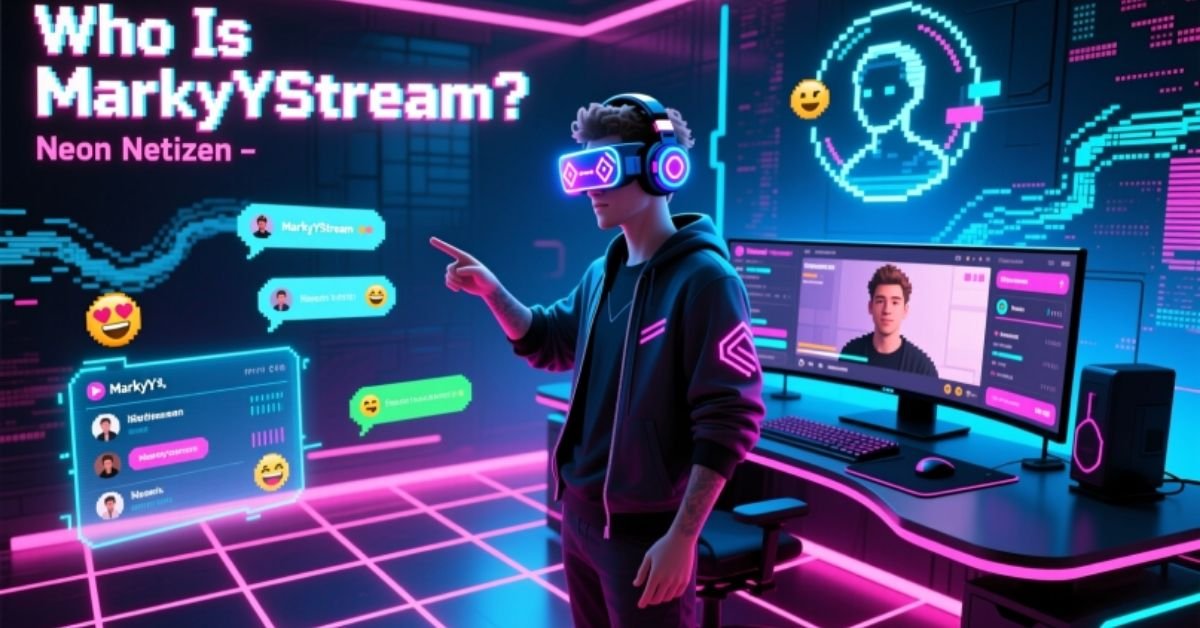TECHNOLOGY
How to Cancel Substack Subscription

Managing digital subscriptions has become an essential part of everyday life. One common platform that people seek to manage is Substack, a popular service for receiving newsletters and premium content from writers and creators. If you’ve been wondering how to cancel Substack subscription, this guide offers everything you need to know — clearly, efficiently, and without unnecessary complications.
Whether you’re ending your subscription due to cost, content preference, or inbox overload, this article provides a comprehensive explanation of the process. By the end, you’ll be confident in your decision and know all the steps to take, along with alternative options and industry standards.
Understanding Substack Subscriptions
Before diving into how to cancel Substack subscription, it’s essential to understand what it involves. Substack offers both free and paid newsletter subscriptions. Paid subscriptions typically grant access to premium content, podcasts, community discussions, and archives. These are billed monthly or annually, depending on your selection.
Users subscribe using an email address and often link their preferred payment method, such as a credit or debit card. Unlike traditional platforms, Substack allows individual writers to manage subscriptions independently, which adds flexibility but can create confusion when it comes to cancellations.
Reasons to Cancel a Substack Subscription
People cancel subscriptions for various reasons. Here are the most common ones:
- Cost Concerns: Monthly or annual fees can add up quickly.
- Content Relevance: The content may no longer be helpful, relevant, or engaging.
- Overwhelming Inbox: Some users prefer fewer emails.
- Change in Preferences: Reading habits and interests evolve over time.
- Privacy Considerations: Some may wish to reduce digital footprints.
Understanding your motivation helps clarify whether a temporary pause or a full cancellation is best.
Step-by-Step Guide on How to Cancel Substack Subscription
To successfully manage your preferences, follow these straightforward steps on how to cancel Substack subscription:
Log Into Your Substack Account
Visit the platform and sign in using the email address linked to your subscription.
Navigate to Account Settings
In the upper-right corner, click your profile icon and select Settings or Account from the dropdown menu.
Access Subscription Details
Scroll to the Subscription or Billing section to view active subscriptions.
Cancel the Subscription
Click on the Manage or Cancel Subscription button next to the relevant newsletter. You’ll be prompted to confirm your decision.
Confirmation
Once you confirm, a cancellation email is sent to your registered address. The current billing period will remain active, and you will not be charged again.
“Users retain access until the end of the billing cycle after cancellation,” notes a newsletter monetization expert.
Things to Remember Before Cancelling
Before you fully commit to cancelling, consider these points:
- Check the Billing Date: You might want to cancel just before the next charge.
- Download Archived Content: Some content may become inaccessible post-cancellation.
- Explore Free Version: Some newsletters offer a free version with reduced content.
- Pause Instead of Cancel: A few creators allow subscribers to pause subscriptions.
If your goal is simply to reduce spending or inbox clutter, these options may offer an ideal middle ground.
Substack vs. Other Subscription Platforms
Here’s how Substack stacks up against other subscription platforms when it comes to subscription management:
| Feature | Substack | Patreon | Medium | Ko-fi | Buy Me a Coffee |
| Ease of Use | High | Moderate | Moderate | High | High |
| Cost to Cancel | $0 | $0 | $0 | $0 | $0 |
| Transparency | High | Moderate | Moderate | High | High |
| Flexibility | High | Moderate | Low | High | High |
| User Control | Direct Control | Limited | Less Control | Direct Control | Direct Control |
As evident from the comparison, how to cancel Substack subscription is more intuitive compared to other platforms that may use more complicated systems or third-party integrations.
Common Challenges When Cancelling
Though the process is user-friendly, a few hurdles may arise:
Inactive Email Address
If you’re unable to access the email used to sign up, recovery may take time.
Forgotten Subscription
Many users subscribe and forget, leading to recurring charges until they spot them on their statements.
Lack of Mobile Support
Substack’s mobile app lacks full subscription management, making desktop use preferable.
Delayed Cancellation
While your subscription ends after the current cycle, some may expect immediate cancellation, causing confusion.
To avoid these issues, always maintain updated email credentials and review subscriptions regularly.
Synonyms and Alternative Phrases
If you’re seeking variations on how to cancel Substack subscription, here are alternatives often used in industry communications:
- End your Substack plan
- Unsubscribe from Substack
- Manage Substack newsletter settings
- Stop Substack payments
- Terminate Substack premium content
- Revoke Substack access
- Opt-out of Substack services
Using these phrases can also help in searches, customer service communication, and exploring support forums.
Best Practices for Managing Online Subscriptions
Knowing how to cancel Substack subscription is just one part of managing your digital lifestyle. Here are expert tips:
- Regular Reviews: Audit subscriptions monthly to identify what’s unused.
- Use Subscription Trackers: Apps like Truebill or Mint track and remind you about renewals.
- Update Payment Info Promptly: This prevents unwanted renewals from outdated cards.
- Set Calendar Reminders: Mark renewal or cancellation dates.
- Centralize Your Accounts: Use one email for all services for easier tracking.
“Digital clutter is the new junk drawer. Periodic maintenance is a must,” says software usability expert Sarah Evans.
Exploring Alternatives After Cancelling
Once you know how to cancel Substack subscription, you might look for new content platforms. Consider:
- Free blogging sites
- News aggregators
- Podcasts on streaming platforms
- YouTube channels in your interest niche
This shift helps reduce subscription fatigue while keeping you informed and entertained.
How to Reach Support if You Face Issues
If anything goes wrong during cancellation, reaching out for help is crucial. Here’s what to do:
- Navigate to the Help or Support section on the platform.
- Use the Contact option or submit a ticket.
- Describe the issue with clarity: include email, newsletter name, and subscription type.
- Be patient — responses may take 24–48 hours.
Importance of Canceling Subscriptions Properly
Leaving subscriptions unchecked leads to:
- Unnecessary charges: Even a few dollars monthly can snowball over time.
- Digital overwhelm: Too many subscriptions clutter your inbox and mental space.
- Security risks: The more accounts you hold, the greater the exposure to data breaches.
Practicing conscious subscription habits keeps your budget and digital life in order.
Conclusion
Knowing how to cancel Substack subscription empowers you to take control of your online engagements. Whether it’s about managing finances, decluttering your digital space, or simply reshaping your reading list, cancellation can be done in a few swift steps. Keep this guide handy, follow the instructions carefully, and explore free or alternative options when possible. Empower yourself with digital discipline, and you’ll never feel overwhelmed by subscriptions again.
Read more:
FAQs
What happens after I cancel my Substack subscription?
You’ll continue to have access to paid content until your current billing cycle ends, after which it will revert to the free version, if available.
Can I get a refund after canceling my subscription?
Typically, refunds aren’t offered unless there’s a billing error. Review the platform’s refund policy before subscribing.
Is deleting my Substack account the same as canceling the subscription?
No. Canceling the subscription stops payments, while deleting your account removes your profile and associated data.
Can I pause my Substack subscription instead of canceling?
Some writers may offer a pause option, but it’s not a default feature on all newsletters. Check individual settings.
How can I manage multiple Substack subscriptions efficiently?
Use a dedicated email, set reminders, or consider a subscription management tool to stay on top of renewals and cancellations.
Will the writer be notified when I cancel the subscription?
No direct notification is sent to the writer when you cancel, but they may see changes in their subscriber count.
TECHNOLOGY
Who Is Jonathonspire? A Deep Dive into a Modern Digital Voice

In today’s fast-evolving digital landscape, creators come and go—but only a select few manage to leave a lasting impression through authenticity, consistency, and vision. One such emerging figure is jonathonspire, a name increasingly associated with thoughtful commentary, creative storytelling, and meaningful online engagement. Though not yet a household name, jonathonspire is steadily building a reputation as a voice worth listening to—especially among audiences seeking depth, originality, and substance in an era often dominated by fleeting trends.
This article offers a detailed and informative look into who jonathonspire is, what drives his work, the platforms he’s most active on, the themes he explores, and why his approach to digital creation stands out. Whether you’re a long-time follower or just discovering this creator for the first time, this guide will help you understand both the public persona and the philosophy behind the name.
Introduction: The Rise of a Purpose-Driven Creator
The internet has democratized influence—anyone with a device and a message can share their voice with the world. But influence without intention rarely endures. Jonathonspire exemplifies the new wave of digital creators who prioritize purpose over virality. His content doesn’t chase algorithmic favor through shock or sensationalism; instead, it invites reflection, encourages learning, and fosters dialogue.
What makes jonathonspire distinctive is not just what he shares—but how and why. His online presence reflects a deliberate effort to build bridges between ideas: between technology and humanity, between creativity and critical thinking, between individual experience and collective understanding. This holistic vision is evident across his essays, videos, social posts, and community interactions.
Unlike many influencer profiles built around aesthetics or lifestyle curation, jonathonspire focuses on substance: examining modern dilemmas, unpacking cultural shifts, and asking questions that linger long after the screen is turned off. In doing so, he joins a growing cohort of creators redefining what it means to be “influential” in the 21st century—not through follower counts alone, but through resonance and relevance.
Origins and Background: Behind the Username
The name jonathonspire is a constructed blend—part personal identity, part symbolic meaning. While the first part, Jonathon, reflects a real-world identity, the suffix -spire carries rich connotations: to aspire, to reach upward; a spire as in the towering architectural feature pointing toward the sky; and even echoes of inspire. Together, jonathonspire signals intention—a commitment to growth, elevation, and motivation.
Though few personal details are publicly shared (by choice, not oversight), available clues suggest a background rooted in interdisciplinary learning. Traces of philosophy, cognitive science, design thinking, and digital literacy appear repeatedly in his work—hinting at formal or self-directed study across fields. There’s a strong emphasis on systems thinking: how individual behaviors aggregate into societal patterns, how small habits shape long-term outcomes, and how digital environments mold perception.
This intellectual foundation doesn’t manifest as jargon-laden lectures. Instead, jonathonspire excels at distillation—taking complex topics and making them accessible without dilution. Whether discussing attention economics, the ethics of AI, or the psychology of motivation, his explanations are anchored in real-world examples, analogies, and—critically—honest admissions of uncertainty.
He often acknowledges that many of today’s biggest questions don’t yet have clear answers—and that’s part of the value he offers: a space to explore, not just declare.
Content Philosophy: Substance, Structure, and Sincerity
At the core of jonathonspire’s approach lies a three-part philosophy: substance, structure, and sincerity.
- Substance means prioritizing ideas with lasting relevance over short-term engagement metrics. A post about “how to stay focused” might evolve into a nuanced exploration of environmental design, dopamine regulation, and digital minimalism—because real focus isn’t about hacks; it’s about context.
- Structure refers to clarity of thought and presentation. His long-form essays often follow a narrative arc: problem → inquiry → synthesis → application. Even short-form content shows careful editing—no filler, no forced humor, no manufactured drama.
- Sincerity, perhaps the most distinguishing trait, means showing up authentically. You won’t find performative outrage or contrived optimism. Instead, jonathonspire shares struggles alongside insights: the difficulty of maintaining consistency, the temptation to compare, the challenge of balancing creation with rest. This vulnerability doesn’t weaken his authority—it strengthens trust.
A recurring theme across his work is agency. In a digital world designed to capture and commodify attention, jonathonspire consistently returns to a central question: How can we reclaim authorship over our time, our tools, and our attention? His content serves less as a set of prescriptions and more as a toolkit for self-authorship.
Platforms and Presence: Where to Find His Work
Jonathonspire maintains a multi-platform presence, but with intentional curation—not replication. Each platform serves a distinct function based on its strengths and audience expectations:
- Substack (Newsletters)
His long-form writing lives primarily on Substack, where he publishes essays ranging from 800 to 3,000 words. Topics span digital well-being, learning strategies, creator ethics, and reflections on modern work culture. These pieces are meticulously researched, often citing academic papers, books, and real-world case studies. Comments are enabled and actively moderated, fostering genuine discussion. - YouTube (Video Essays & Reflections)
Here, jonathonspire produces occasional video essays—usually under 15 minutes—with minimal editing flourishes. The focus remains on ideas, not production polish. Visuals support the narrative (e.g., diagrams, archival footage, subtle animations), never distract from it. His calm, measured delivery invites contemplation rather than passive consumption. - X (formerly Twitter)
On X, he uses threads to break down complex concepts into digestible points. These threads often serve as previews or supplements to longer pieces. Unlike many who use the platform for hot takes, his posts are reflective, open-ended, and frequently pose questions to the audience: What would you add? Where do you disagree? - Instagram & TikTok (Selective Use)
These platforms see less frequent updates. When used, content is highly intentional—such as quote cards from essays, behind-the-scenes glimpses of research, or short “thought experiments.” He avoids trends that don’t align with his message, even at the cost of reach.
Notably, jonathonspire does not operate as a full-time influencer. He maintains boundaries between creation and commerce—no sponsored posts, no affiliate links, no product launches (as of 2025). This independence preserves his editorial integrity and allows him to speak candidly about topics many creators avoid for fear of alienating brands.
Signature Themes and Recurring Topics
While his work covers a broad intellectual terrain, several themes appear consistently across jonathonspire’s output:
1. The Attention Economy and Its Discontents
He critically examines how digital platforms are engineered to maximize engagement—even at the expense of well-being. Rather than blaming users for “lack of willpower,” he highlights structural design choices (e.g., infinite scroll, variable rewards) and proposes practical countermeasures: attention audits, intentional friction, and digital decluttering.
2. Learning in the Age of Overload
With information abundance comes a new challenge: filtering. Jonathonspire explores frameworks for deep learning—such as spaced repetition, generative note-taking, and concept mapping—and stresses the importance of unlearning outdated mental models.
3. The Ethics of Creation
Who gets to speak? Who gets heard? How do algorithms shape discourse? These questions inform his reflections on creator responsibility. He advocates for humility (acknowledging blind spots), transparency (citing sources), and reciprocity (amplifying lesser-known voices).
4. Time and Temporality
Time isn’t just a resource—it’s a lens. Jonathonspire writes compellingly about temporal perception: why time feels faster as we age, how deadlines shape creativity, and the psychological weight of “borrowed time” (e.g., procrastination cycles). He champions time affluence over time scarcity.
5. Small-Scale Systems Change
Rather than waiting for macro-level reform, he encourages micro-actions: redesigning a daily routine, tweaking notification settings, initiating a local book club. His message: You are not powerless. Systemic issues are real, but personal agency remains a vital leverage point.
These themes rarely exist in isolation. A piece on focus might weave in neuroscience (dopamine regulation), design (app interfaces), and philosophy (the nature of choice). This interdisciplinary fluency is one reason his audience includes students, educators, designers, developers, and mental health professionals.
Community and Impact: More Than Followers
One of jonathonspire’s most admirable traits is his commitment to community over audience. He avoids the language of “followers” in favor of “readers,” “co-thinkers,” or “participants.” Engagement isn’t measured in likes, but in replies that spark further dialogue.
His newsletter comments section is unusually active—not with praise, but with pushback, extensions, and personal anecdotes. He routinely responds, sometimes turning insightful comments into follow-up pieces. This two-way exchange reinforces a key belief: Understanding is co-created.
Educators have reported using his essays in classrooms to prompt discussions on digital literacy. Mental health advocates cite his framing of burnout as “chronic misalignment” rather than personal failure. Independent creators credit him with helping them reframe their relationship to metrics and comparison.
Importantly, jonathonspire doesn’t position himself as an expert dispensing answers. In one widely shared essay, he wrote:
“I’m not here to give you a map. I’m here to help you learn how to read the terrain.”
That ethos—empowerment through epistemic humility—resonates deeply in an age of overconfident pundits.
Challenges and Criticisms: A Balanced View
No creator operates in a vacuum, and jonathonspire is not immune to critique. Some common observations from readers include:
- Pacing and Accessibility: His longer essays demand time and focus—a barrier for those seeking quick fixes. He acknowledges this, noting: “If this piece isn’t for you right now, that’s okay. Come back when the timing fits.”
- Lack of Personal Narrative: He shares ideas, not life updates. While this protects privacy and keeps focus on concepts, some readers yearn for more biographical grounding to build connection.
- Limited Output Frequency: He publishes roughly 2–4 major pieces per month—far less than algorithm-optimized creators. But he defends this as necessary: “Rushing insight produces noise. I’d rather be slow and signal.”
None of these are fatal flaws; many consider them features, not bugs. They reflect a conscious rejection of content-industrial pressures. In a world that rewards volume, jonathonspire chooses vitality.
The Future: What’s Next for Jonathonspire?
As of 2025, jonathonspire shows no signs of pivoting toward mainstream virality. Instead, early indicators point to deeper investment in:
- Collaborative Projects: He’s begun partnering with researchers and artists on multimedia explorations—e.g., an interactive essay on memory distortion, co-created with a cognitive psychologist.
- Offline Extensions: Plans include hosting small, in-person salons (invitation-only, topic-focused gatherings) to complement digital discourse.
- Archival Work: Curating a public repository of “evergreen” resources—tools, frameworks, reading lists—designed to outlast platform churn.
Long-term, his trajectory suggests a move toward infrastructure-building: not just sharing ideas, but helping others build systems to generate and sustain their own.
Whatever comes next, one thing seems certain: jonathonspire will prioritize integrity over scale, depth over distraction, and invitation over instruction.
Conclusion: Why Jonathonspire Matters
In a digital ecosystem crowded with noise, jonathonspire offers something increasingly rare: quiet clarity. His work doesn’t shout—it resonates. It doesn’t simplify—it clarifies. It doesn’t tell you what to think—it helps you think better.
The value of jonathonspire isn’t in offering definitive answers. It’s in modeling how to ask better questions:
- How do we design attention, not just capture it?
- How do we create without burning out—or burning others?
- How do we stay curious in a world pushing us toward certainty?
That kind of intellectual generosity is why jonathonspire continues to grow—not explosively, but sustainably. Not through hype, but through trust.
As digital culture evolves—toward AI-generated content, immersive virtual spaces, and new forms of collective cognition—the need for grounded, reflective voices will only increase. Creators like jonathonspire help ensure that progress doesn’t come at the cost of meaning.
In the end, jonathonspire reminds us that the most powerful technology isn’t the latest app or algorithm. It’s the human capacity to reflect, connect, and choose—deliberately, compassionately, and with hope.
TECHNOLOGY
KZ43X9NNJM65-: What This Unique Identifier Could Mean

At first glance, kz43x9nnjm65- looks like a random jumble of letters and numbers—but in the digital world, such strings are rarely accidental. Alphanumeric codes like this one are commonly used as unique identifiers in software, databases, tracking systems, or security protocols. While kz43x9nnjm65- doesn’t correspond to any widely known public standard, it likely serves a specific technical purpose behind the scenes. This article explores what this type of code could mean, where you might encounter it, and how to respond if it appears unexpectedly on your device or in your workflow.
Importantly, there’s no evidence that kz43x9nnjm65- is malicious on its own—but understanding its context is key to using it safely and effectively.
Common Uses of Alphanumeric Identifiers Like KZ43X9NNJM65-
In computing, random-looking strings such as kz43x9nnjm65- are often generated automatically to label or track something unique. For example, they might act as session IDs for website logins, transaction references in e-commerce, or file names in cloud storage. The mix of lowercase letters, numbers, and sometimes symbols helps ensure each ID is distinct and hard to guess—boosting security and organization.
These identifiers are typically created by algorithms using cryptographic randomness or timestamp-based hashing. The trailing hyphen in kz43x9nnjm65- could be a formatting convention, a placeholder, or even a truncated character from a longer string. It’s not unusual in log files, API responses, or debugging outputs.
Typical Scenarios Where You Might See KZ43X9NNJM65-
- Web Session Tokens: Temporary IDs assigned when you log into a service
- Error Logs: Unique tags that help developers trace specific system failures
- Download Filenames: Auto-generated names for temporary or backup files
- API Request IDs: Used to track individual calls between software systems
- Database Keys: Internal references for records that aren’t meant for user display
Is KZ43X9NNJM65- Safe? What You Should Know
On its own, kz43x9nnjm65- is just data—it has no inherent risk. However, if you see it in an unexpected place (like a pop-up, email subject line, or strange filename), it’s wise to consider the context. For instance, if a file named kz43x9nnjm65-.exe appears in your Downloads folder, that could be suspicious, as legitimate software rarely uses such random names.
Conversely, if you’re a developer and this string appears in your application logs, it’s likely a normal part of system operation. Always check the source: Was it generated by a trusted app? Did you initiate the action that produced it? When in doubt, avoid clicking or executing anything tied to unfamiliar identifiers.
Why Developers Use Strings Like KZ43X9NNJM65-
From a technical standpoint, strings like kz43x9nnjm65- offer several advantages. They’re compact, easy for machines to process, and statistically unique—meaning the chance of duplication is extremely low. This makes them ideal for labeling millions of transactions, users, or events without confusion.
They also enhance privacy. Instead of using your email or name in logs, a system might assign you kz43x9nnjm65- as a pseudonym. This way, data can be analyzed without exposing personal information. Many privacy-focused platforms use this technique to comply with regulations like GDPR or CCPA.
What to Do If You Encounter KZ43X9NNJM65- Unexpectedly
If kz43x9nnjm65- shows up in a place that feels odd—like a text message from an unknown number or a strange entry in your task manager—take a cautious approach. First, avoid interacting with it directly. Next, run a quick system scan using trusted antivirus software. You can also search online to see if others have reported similar strings in phishing or malware campaigns, though most random IDs won’t yield public results.
For non-technical users, the safest rule is: If you didn’t create it or request it, treat it with caution. Legitimate services usually use readable names or clear labels—not obscure codes—when communicating with customers.
The Bigger Picture: Digital Literacy in an Automated World
As software becomes more automated, users will increasingly encounter machine-generated strings like kz43x9nnjm65-. Understanding their purpose reduces fear and helps people distinguish between normal system behavior and potential threats. Digital literacy isn’t just about passwords and privacy settings—it’s also about recognizing the “language” of computers and knowing when to investigate further.
In most cases, these identifiers are harmless background noise. But staying informed ensures you remain in control of your digital experience.
Final Thoughts
While kz43x9nnjm65- may seem cryptic, it’s almost certainly a routine part of how modern software operates. Whether it’s tracking your session, labeling a file, or debugging an app, such codes keep digital systems organized and secure. By learning to interpret them in context—and staying alert to red flags—you can navigate the online world with greater confidence and safety.
Frequently Asked Questions (FAQs)
1. Can I use kz43x9nnjm65- as a password?
It’s not recommended—while it looks random, it may already exist in public logs or databases, making it less secure.
2. Does kz43x9nnjm65- contain personal data?
No, it’s a reference ID; any link to personal info exists only in the system that generated it, not in the string itself.
3. Why does it end with a hyphen?
The hyphen may be a separator, a formatting artifact, or part of a base64-like encoding scheme—often harmless.
4. Is this string used in any known software?
There’s no public documentation linking it to major software, suggesting it’s either internal, temporary, or randomly generated.
5. Should I delete files named kz43x9nnjm65-?
Only if you don’t recognize their source; if they’re from a trusted app (like a browser or cloud service), they may be safe temporary files.
TECHNOLOGY
Who Is markyystreams? Exploring the Digital Creator’s Unique Online Presence
-

 GENERAL3 months ago
GENERAL3 months agoRobert Hubbell Wikipedia: What’s His 2025 Biography Guide?
-

 EDUCATION5 months ago
EDUCATION5 months agoJay Kuo Substack: Unpacking the Voice of Legal Insight
-

 GENERAL5 months ago
GENERAL5 months agoDream Cake: A Decadent Delight Worth Savoring
-

 GENERAL5 months ago
GENERAL5 months agoChris Hedges Substack: A Voice of Dissent in the Digital Age
-

 EDUCATION5 months ago
EDUCATION5 months agoEconomic Blackout Results: The Financial Domino Effect
-

 GENERAL6 months ago
GENERAL6 months agoMax Azzarello Substack: Inside the Mind of a Radical Truth-Seeker
-

 ENTERTAINMENT5 months ago
ENTERTAINMENT5 months agoTyler the Creator Dad Truth
-

 ENTERTAINMENT6 months ago
ENTERTAINMENT6 months agoStumptown Footy: Your Go-To Source for Portland Soccer Insights

